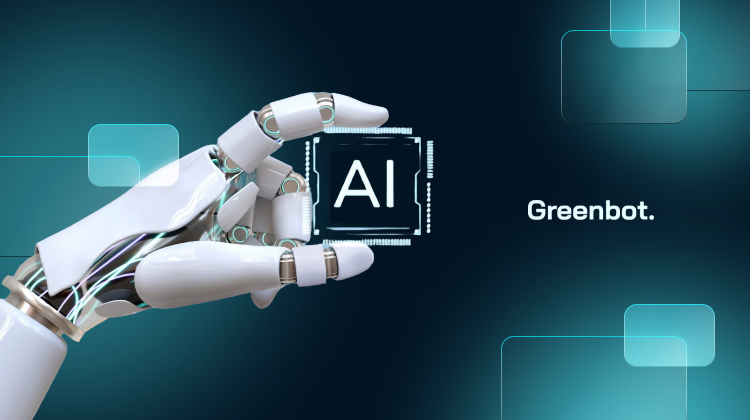
Artificial intelligence isn’t the future—it’s already part of daily life. AI shapes how we work, live, and decide, from the apps on your phone to the systems running cities. Tools like Perplexity, ChatGPT, and smart dashboards are already part of your routine.
In 2025, AI will shift from helpful to essential. It will write, design, plan, and speak. Multimodal models will now work with text, images, and audio. Generative tools will power content, research, and coding. AI agents will be able to finish tasks on their own with little human input.
This isn’t just hype. Governments, companies, and individuals are using AI to plan better, move faster, and think smarter. This article will explore the top AI trends that are changing how we work, create, and live in the year ahead.
What Are the Big 5 AI Trends This Year?
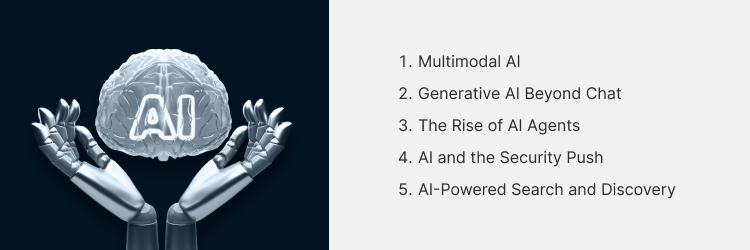
Artificial intelligence is moving fast in 2025. These five trends show how it’s becoming smarter, more practical, and fully part of everyday life.
1. Multimodal AI
Multimodal AI blends text, images, video, and audio. It helps systems make better sense of real-world context. Tools like Google Gemini, GPT-4V, and Meta’s MM-1 are already in use. Cities use them in dashboards, planning tools, and services to support citizens directly.
2. Generative AI Beyond Chat
Generative AI now powers more than chatbots. It writes code, designs images, and speeds up medical research. GitHub Copilot helps developers. Adobe Firefly supports content teams. In healthcare, these models simulate molecules and explore treatments faster than ever.
3. The Rise of AI Agents
Agentic AI is the next frontier. These AI-powered agents learn, plan, and act with little human input. They help companies run HR, support teams, and streamline work. Tools like Auto-GPT and Cognosys show how far autonomous systems can go.
4. AI and the Security Push
As AI use grows, safety becomes urgent. Deepfake detection, bias checks, and better oversight are top priorities. OpenAI is building safer tools. The EU AI Act pushes stronger rules. This trend is all about keeping AI use secure and fair.
5. AI-Powered Search and Discovery
Search is smarter now. Tools like Perplexity, Bing Copilot, and Google’s Search Generative Experience don’t just list links—they give direct answers. This shift changes how people learn, shop, and explore online. It’s one of the biggest changes in how we use the web.
Generative AI Moves Beyond Chatbots
Generative AI isn’t just for talking. It now supports real work across fields, including writing, coding, visuals, and data analysis.
These tools boost productivity and reduce busywork. Over half of AI leaders say they’ve already seen results.
- Content creation: ChatGPT handles blogs, emails, and campaigns.
- Generating images: Adobe Firefly and Midjourney turn ideas into visuals.
- Data analysis: Tools scan reports, pull trends, and simplify raw input.
- Scientific research: AlphaFold predicts proteins and speeds up lab work.
- Coding: GitHub Copilot suggests fixes and writes code in real time.
- Business ops: Teams localize content, collect feedback, and personalize at scale.
Multimodal AI: Power of Context and Comprehension
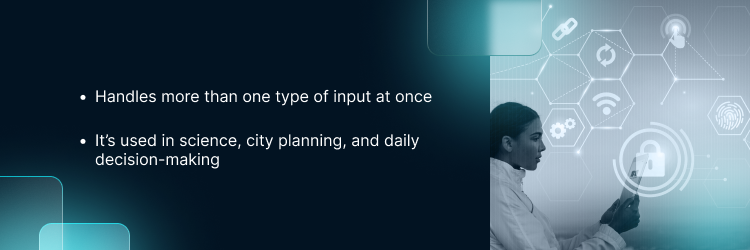
Multimodal AI handles more than one type of input at once—text, images, voice, and video—which gives it a better grasp of context and meaning.
It’s used in science, city planning, and daily decision-making. It helps teams work faster and smarter using large, diverse data sets.
- Text + image: Health workers match scan results with patient notes.
- Video + audio: Emergency teams review footage and calls for better response.
- Infrastructure planning: Cities combine sensors, traffic, and weather data.
- Research: Labs mix notes, visuals, and models to test ideas.
- Public service: Agencies use it to shorten wait times and improve access.
- Knowledge work: Teams review documents, transcripts, and visuals in one flow.
The Rise of AI Agents and Agentic AI Systems

AI agents are more than smart tools—they act on their own. Unlike basic automation, these systems work toward goals, adapt fast, and don’t need constant input. This is what sets agentic AI apart.
In 2025, businesses use sophisticated AI agents to manage tasks like scheduling, record-keeping, and team support. These tools update workflows, reduce human effort, and learn from results in real time.
Tools like Auto-GPT and Cognosys are early examples. They combine smart decisions with action, moving AI from assistant to autonomous worker. Still, people debate the limits—what AI should handle, and what must stay human.
AI Companions: From Productivity Tools to Everyday Support
AI companions are now part of daily life. They help people focus, manage schedules, and even talk through challenging moments. Apps like Replika are used for mental check-ins and conversation. Others send reminders, track goals, and support routines.
These tools blend generative and agentic AI. They learn how you speak and what you need and adjust as you go. They’re helpful for busy users, older adults, and anyone who needs steady support.
But they aren’t a replacement for people. These tools assist—they don’t connect on a human level. That’s why personal judgment still matters, especially in emotional or sensitive situations.
AI-Powered Tools Reshape How Work Gets Done
AI tools are changing how teams work. They speed up tasks, support choices, and keep things moving.
- Automation: Drafts emails, books meetings, and cuts manual work.
- Content creation: Localizes text, builds campaigns, and adapts fast.
- Design + development: Fixes code and suggests layouts.
- Decision support: Helps plan sales, inventory, and services.
- Research: Runs simulations and helps labs move faster.
- Custom tools: Companies tailor AI apps to fit real tasks.
These changes help teams save time, reduce friction, and get better results.
AI Models Are Faster, Smarter, and More Specialized
AI models do more with less. They’re not just huge—they’re trained for specific tasks. Speed, size, and purpose now go hand in hand.
Small models are tuned for targeted jobs like reading health records, guiding research, or scanning policy data. Foundation models like GPT-4 and Claude remain robust, but more companies use smaller tools trained on their own data.
These focused models perform better and waste less. In coding, science, and medicine, they’ve raised the bar. This shift marks the end of one-size-fits-all AI. Now, it’s all about purpose-built results.
AI in the Public Sector: Smarter Cities and Safer Systems
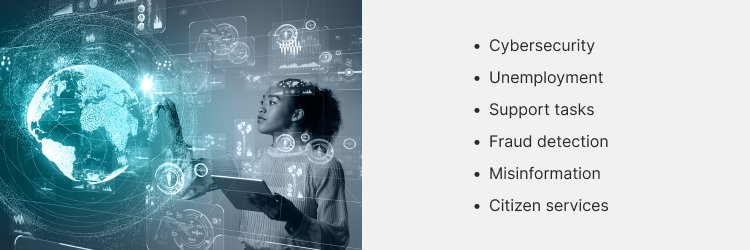
Governments now use AI to improve services, spot threats, and act faster. Almost half of public agencies say their AI systems are well developed. Here’s how AI helps today:
- Cybersecurity: New York City monitors 90 billion cyber events weekly.
- Unemployment: Wisconsin used AI to handle a spike in claims.
- Support tasks: AI agents process forms and pull insights.
- Fraud detection: AI flags fake claims and tracks spending.
- Misinformation: Tools scan social media and news to stop false info.
- Citizen services: Chat tools help with licensing, healthcare, and taxes.
These tools turn big data into faster, smarter public decisions.
Businesses and AI: From Hype to Practical Use
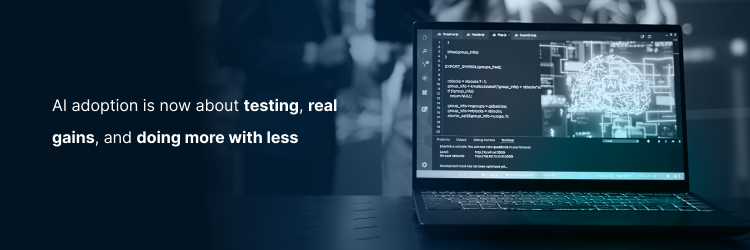
In 2025, companies care less about buzz and more about results. AI adoption is now about testing, real gains, and doing more with less.
Operations teams use it to monitor systems and track supply chains. Marketers study behavior and shape better campaigns. HR screens resumes and helps new hires. Finance uses it to catch fraud and plan.
Leaders want tools they can trust. They focus on steady wins, not wild promises. The most progress comes from treating AI as a long-term strategy, not a shortcut.
What Does Enterprise AI Really Mean in 2025?
Enterprise AI means using AI across the entire business, not just one team. It powers decision-making, reduces risk, and handles complex data behind the scenes.
It’s used for fraud detection, hiring, forecasting, and document management. Many companies train AI models on their own data to get better results.
Leaders like chief AI officers and CTOs now set the rules. They decide how tools are tested, tracked, and used responsibly. With AI deeply woven into business, strong oversight is key.
Security, Regulation, and the Future of AI Governance

As artificial intelligence use grows, so do biases, misuse, and sensitive information risks. That’s why AI governance is becoming a top priority. The current regulatory environment is unclear, leaving gaps in companies’ management of new systems.
Many governments now push for tiered risk frameworks. These help flag high-risk tools for stricter oversight, while keeping lower-risk models more flexible. Without clear rules, tracking risks or enforcing good practices is tough.
The response isn’t just coming from lawmakers. Chief technology officers and AI leads now test systems, write internal policies, and guide teams on responsible use. Governments also rely on AI to process big datasets, shape policy, and support public services.
The future depends on balance—supporting progress while managing the related risks.
AI Literacy Becomes Non-Negotiable
AI literacy is now essential. From CEOs to interns, people need to understand how AI works—and how it fails. In 2025, many organizations invest in training so teams can use tools better and avoid mistakes.
Without this, it’s easy to misuse outputs, ignore bias, or underuse your own data. Skill gaps are still common, especially in the early stages of AI adoption.
Training helps with:
- Informed decisions: Teams ask better questions and spot problems early.
- Faster adoption: Everyone gets up to speed quicker.
- Stronger results: Smart users make the most of AI.
- Trust and safety: Fewer risks, fewer surprises.
- Improved productivity: Learning leads to efficiency gains.
AI knowledge is no longer optional—it’s a requirement.
What’s Next for AI?
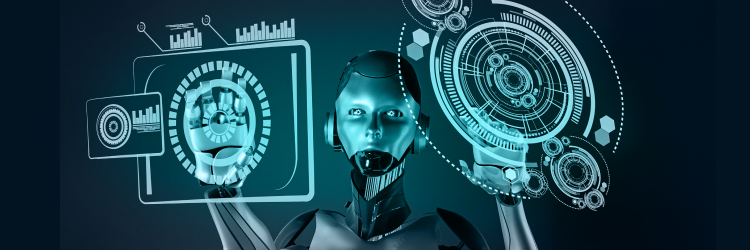
AI is now tackling real-world challenges, not just office tasks. In 2025, tools will be used in climate research, health diagnostics, and education. This shows the growing power of AI across critical fields.
In science, large language models like AlphaFold help researchers predict molecules. AI also reads satellite data to monitor the environment and flag weather threats. In healthcare, tools improve diagnostics and expand care in hard-to-reach areas.
Teachers design lessons using generative tools. Students learn through adaptive platforms. Data scientists run tests in generative AI playgrounds to build better models.
Expect more growth in natural sciences, materials science, and knowledge management as AI expands across various domains, providing vast amounts of data to sort and learn from.
FAQs About AI Trends
What is the biggest AI trend in 2025?
The rise of agentic AI is the latest trend to watch. These systems finish complex tasks with less human intervention, offering a new competitive edge. Backed by AI leaders, they mark a shift in AI development, where tools don’t just assist but work toward goals.
What are the 5 big ideas in AI right now?
The top five AI trends are multimodal AI, generative AI, agentic AI, AI-powered search, and strong governance. These AI applications support safety, creativity, and reasoning. As artificial intelligence becomes an integral part of life, these trends help companies keep pace with other organizations.
What is the trend of AI usage in business?
Business leaders are ditching hype for real results. They use AI tools to create content, manage unstructured data, and support planning. AI companies now measure outcomes before scaling. AI gives firms a broad range of AI solutions to speed growth and reduce security risks.
Why are AI agents important?
AI agents do more than follow commands. They take on mundane tasks and more complex tasks, boosting team output. These agents rely on large language models and real-time reasoning. For many firms, they’re now a standard part of workflows across software development and support.
How is generative AI changing work today?
Generative AI drives writing, visuals, code, and data insights. It improves speed and quality across teams. With tools built on AI and machine learning and cloud computing, this tech unlocks AI’s potential and redefines what’s possible with modern data sets and workflows.
Final Thoughts on AI Trends
AI is no longer new—it’s embedded in our lives and work. From global health to smart cities, tech is everywhere. What matters now is how we guide it.
Strong governance, clear training, and flexible systems will define AI’s future. We must balance innovation with care.
As we push into new territory—with vector databases, natural language processing, small language models, and sharper AI capabilities—our focus must be building trust, not just speed.
The power of multimodal AI and other tools will only grow. That’s why understanding AI is increasingly important—for everyone.























